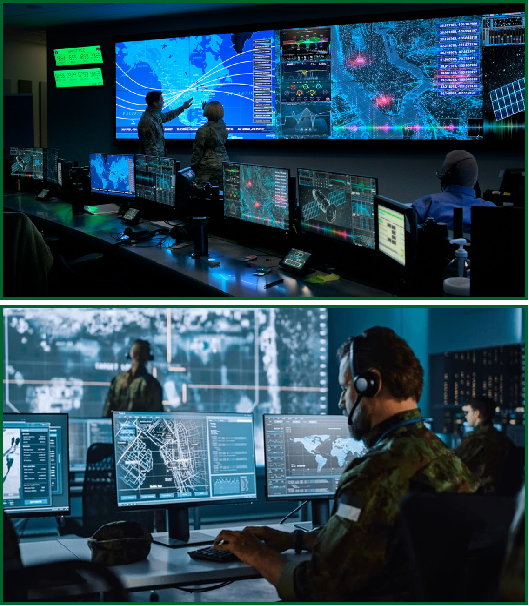Request a demo
- Support
In modern warfare, strategic imperatives cover land, sea, air, cyber, and space domains.
- Artificial Intelligence: With AI and Data Analytics Software Algorithms, processes vast amounts of data collected from sensors, satellites, unmanned vehicles, and other sources. Analyzes this data to identify patterns, detect anomalies, and provide predictive insights.
- Actionable Intelligence: Transform complex data streams into clear visualizations, maps, and reports, presenting commanders with a coherent picture of the battlespace in real-time.
- Sensor Networks: Provides continuous updates on the environment, enemy movements, and friendly forces' positions from traditional radar and sonar systems to sophisticated surveillance technologies capable of monitoring activities across vast areas.
- Cyber Security: Ensures the integrity of communication networks, safeguards critical infrastructure, and protects sensitive information from cyberattacks. It involves proactive measures such as network monitoring, threat detection, and rapid response protocols to mitigate potential vulnerabilities and maintain operational continuity.

Design and Specifications
- Centers envisioned as Executive Command Center, Auditorium Command Center, Board Command Centers, and Node Command Centers (stationary and/or mobile).
- Each Center designed for specific purpose and communications.
- Layout, furniture, interior design, and technology selected for flexibility, connectivity, capability, longevity, and redundancy.
- Emphasis on sightlines, lack of distractions, team sharing, and communications/information based on security levels.
- Modular construction affords adaptability as technology changes and the utilization of the spaces changes over time.
- Technology (monitors/screens, computer hardware & software, mobile devices, cabling, security, sensors, etc.) selected for highest of quality, scalability, and warranties and guarantees.




